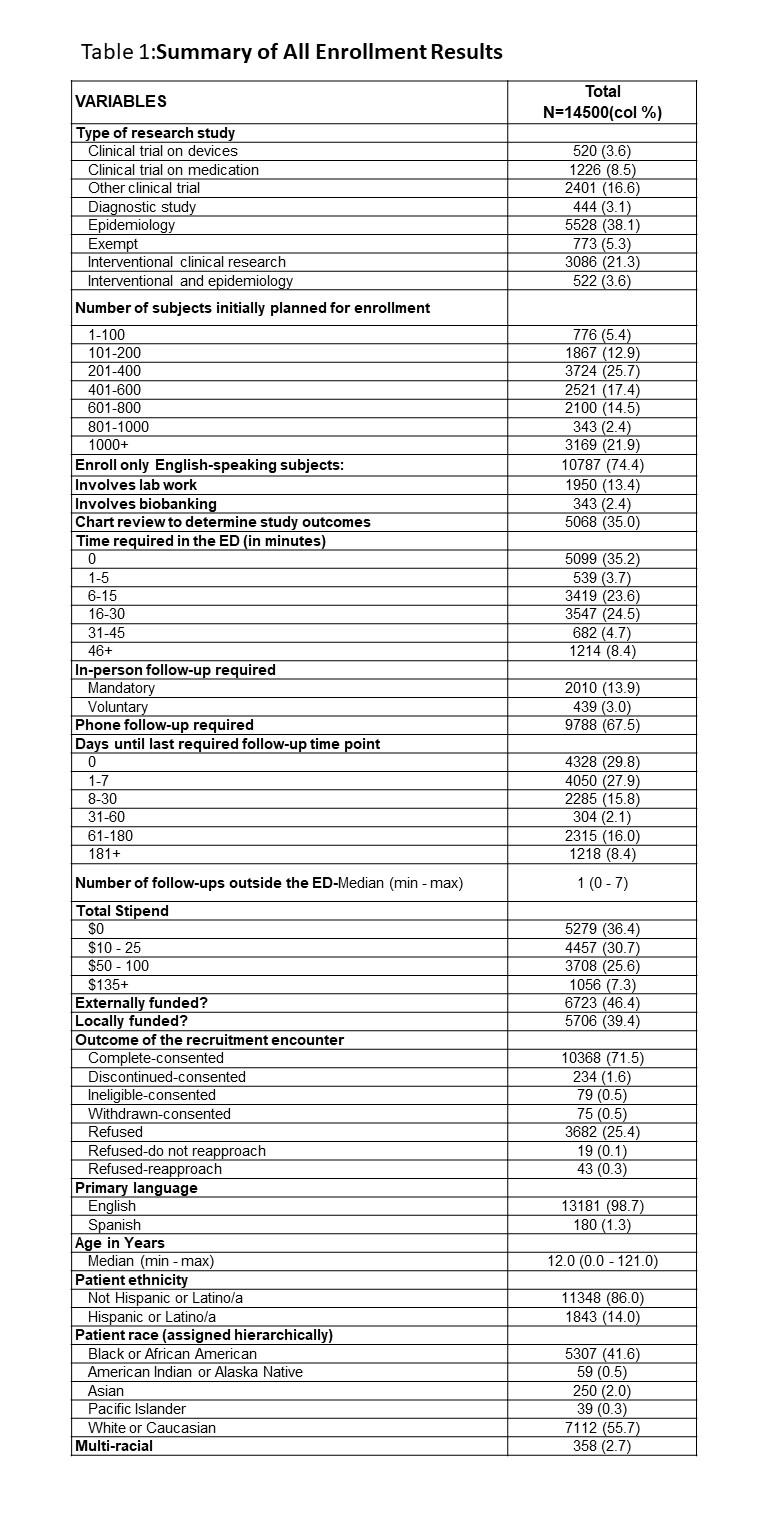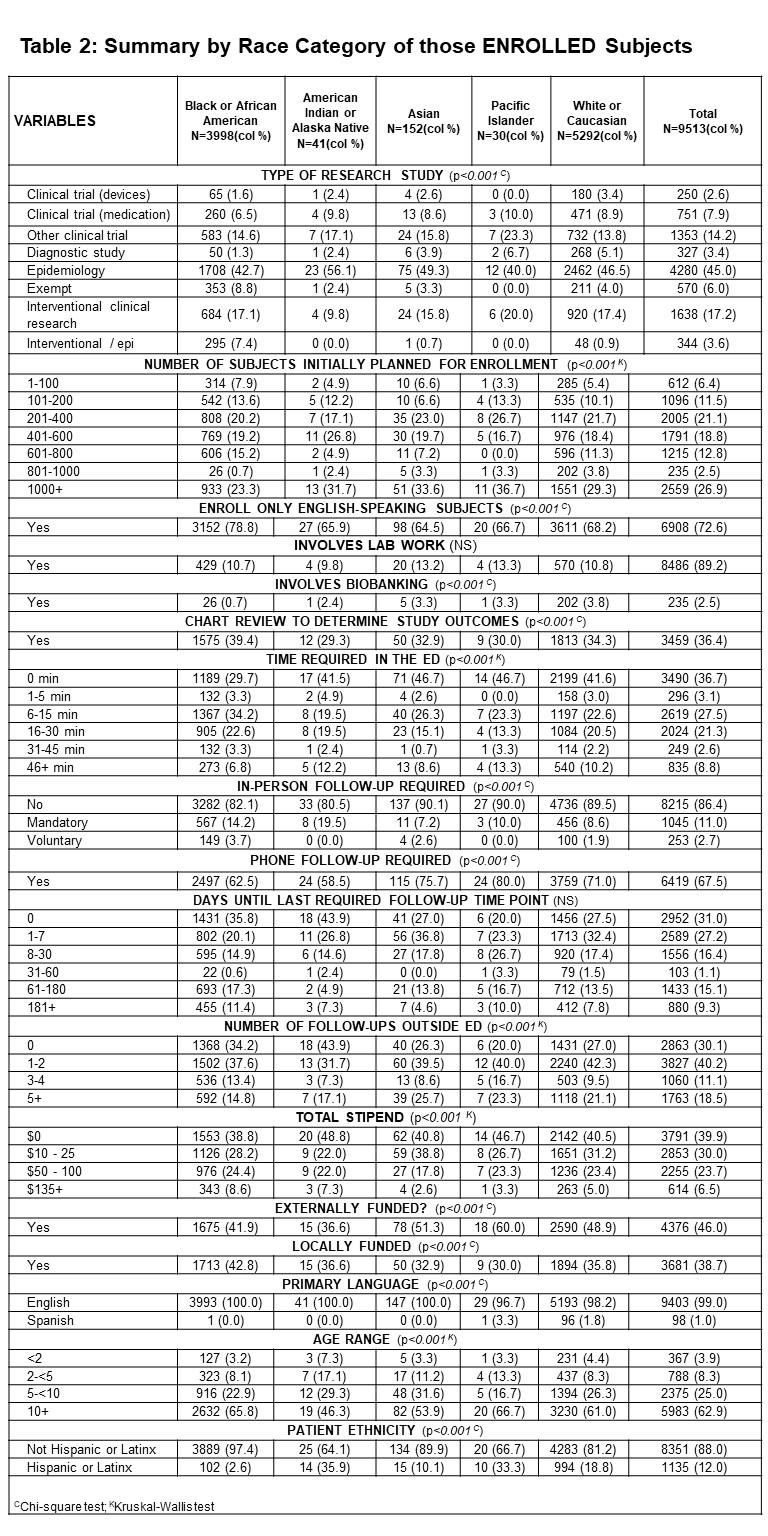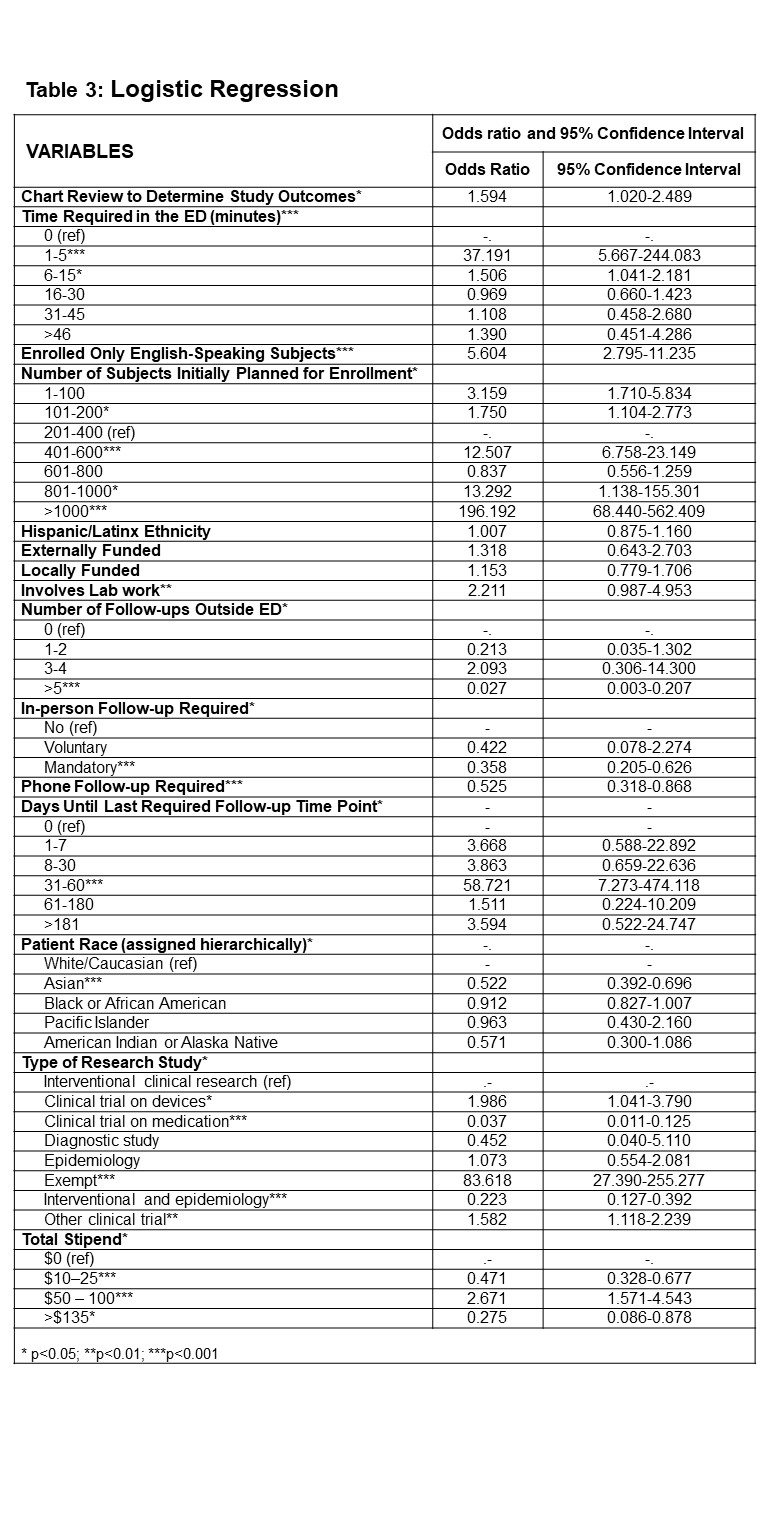Emergency Medicine: All Areas
Emergency Medicine 13
363 - Identifying Bias In Research Design in a Pediatric Emergency Department
Publication Number: 363.404

Danny G. Thomas, MD, MPH (he/him/his)
Professor of Pediatrics
Medical College of Wisconsin
MIlwaukee, Wisconsin, United States
Presenting Author(s)
Background: There is a significant imbalance in the representation of minorities in clinical research which may be due to differences in design and recruitment strategies.
Objective: The purpose of this study is to determine if there are clinical research design elements that influence enrollment among patients based on race or ethnicity.
Design/Methods:
We utilized our pediatric emergency department (ED) research screening database containing all prospective studies enrolling in the past 10 years. This database contains the study information, medical record number (MRN), and subject status (enrolled, refused, screening failure, etc.). We used the existing MRN to link to the Electronic Medical Record to add, race and ethnicity to the database. We included only encounters where enrollment or refusal was documented and excluded studies that targeted subjects based on race and ethnicity or where race was unknown. The remaining studies underwent a structured review to determine key study design features (e.g. research type, follow-up requirements, stipends) Wilcoxon rank-sum tests compare continuous variables and Chi-square tests compared categorical variables. Logistic regression was used to model the outcome of enrollment.
Results:
Data was available from 29,036 study recruitment encounters. 14,500 encounters met inclusion/exclusion criteria (see Table 1 for summary of variables). After excluding “unknown” race, 12,767 encounters were left for analysis. There were statistically significant differences in enrollment among racial groups based on elements of research design (See Table 2). Logistic regression demonstrated increased odds of enrollment based on study type (Exempt > > Device trials > other Clinical trials), studies < 15 min. of added time in the ED, English-only studies, and lab work. There were lower odds of enrollment for Asian patients, for medication trials, and for studies based on follow-up needs ( >5 follow-ups, Mandatory in-person follow-up, phone follow-up) but no negative association with follow-up duration. There were variable odds of enrollment based on study sample size and stipend amount. (See Table 3)
Conclusion(s): This study found some differences in enrollment among patients based on race associated with elements of study design. However, logistic regression only found differences in the recruitment of Asian subjects. This study demonstrated that there were certain study characteristics that were associated with higher participant refusal rates which may inform future research design.


